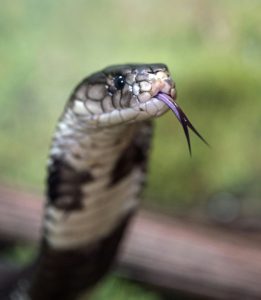The Black Stone and the Herbalist
by Sr. Sheila Devane MMM Ireland 19.04.2024
 The other evening I was watching a programme with wild animals when suddenly a snake appeared, then a person with a snake bite was shown on the screen and from then on managing this emergency took over the story. There was a rush to get immediate treatment, lots of drama and I was quickly brought back to Tanzania in East Africa, to the White Fathers, or Missionaries of Africa as we now call them, and to the famous black stone that we all carried and used for snakebites.
The other evening I was watching a programme with wild animals when suddenly a snake appeared, then a person with a snake bite was shown on the screen and from then on managing this emergency took over the story. There was a rush to get immediate treatment, lots of drama and I was quickly brought back to Tanzania in East Africa, to the White Fathers, or Missionaries of Africa as we now call them, and to the famous black stone that we all carried and used for snakebites.Let me tell you what I know and remember so well about this amazing, healing stone.
First of all is is not a stone at all though it seems like one; it is small and smooth and for all the world looks and feels like the pure black pebbles that one could find on any beach here in Ireland. But it lives and works in Africa.
It is a piece of treated bone from the hip joint of a cow that has been used for generations for curing bites from snakes, scorpions, hunting spiders and other creatures with a poisonous venom. It’s biggest and most famous use is for snakebites. When a person is bitten it is best to apply the black stone straightway to the site of the bite where it sticks and sucks out the venom effectively.
In chatting to sisters last night as we celebrated our 87th birthday as MMM, I learned that it is dipped in milk in some cultures before use, in others it is applied dry and in all it is a wonder worker and lifesaver. In East Africa we always cleansed it by soaking it in milk for some hours, or overnight, after use and then put it away in a known place in the house or dispensary for the next emergency. In addition to this all of us carried one and it was like being without your most needed personal item – a mobile phone nowadays – if you didn’t have your black stone when needed!
I personally saw it used many, many times and most recently one day in Arusha when visiting a family with an epileptic child; while there a snake appeared quickly in the grass and bit a younger sibling; fortunately I had a black stone and the family who had been living in the town for years were alarmed and relieved to know that I had one. We applied it quickly to a screaming child while an elder clobbered the snake. The child recovered. The snake didn’t. My fame was assured!
Talking about this last evening brought us all thinking of the many cures, healing persons and various objects here in Ireland and for this I have another story -this time from the Fanad Peninsula in N.E Donegal. I spent summer holidays there with my grandmother throughout my childhood and learned so much not least about a well-used cure for cancer of the mouth.
Men and some women smoked the pipe a lot in Fanad. It seemed to just live in their mouths and they talked away with the pipe holding itself there – such clever people! Cancer of the mouth was common; people from Donegal had to travel to St. Luke’s Hospital in Dublin at that time for any and every form of cancer treatment. This was a journey involving at least one overnight stay – in Letterkenny – for them and their relatives. They used to say going to America was easier from Fanad!
Once a diagnosis of cancer was made and further appointments suggested by the learned doctors in St. Luke’s, the people of Fanad decided on another avenue of treatment. Instead of returning to Dublin they made a journey within Co. Donegal to a famous man with a cure – the Patten’s plaster. I was very small when I learned of this and had no idea then that I was studying cultural oncology. Patten was an herbalist and he applied a potent blob of herbs to the site of the tumour. This in time – like the black stone but much slower- it sucked out the cancerous cells and took away a considerable piece of the person’s lip tissue as well. Interestingly the wound healed well without complication apart from leaving a gap that told the story of a mouth cancer and a cure by this native method. I met many Fanad men who had had the Patten’s plaster and went on to live long lives afterwards. The way they spoke of it in Fanad was …”they do things different(ly) in Dublin.”
Last night celebrating together we remembered these cures, the many healing stories associated with them, and once again appreciated our own MMM healing charism that is shared by people all over the world and all down the ages.
SEE ALL BLOG POSTS
